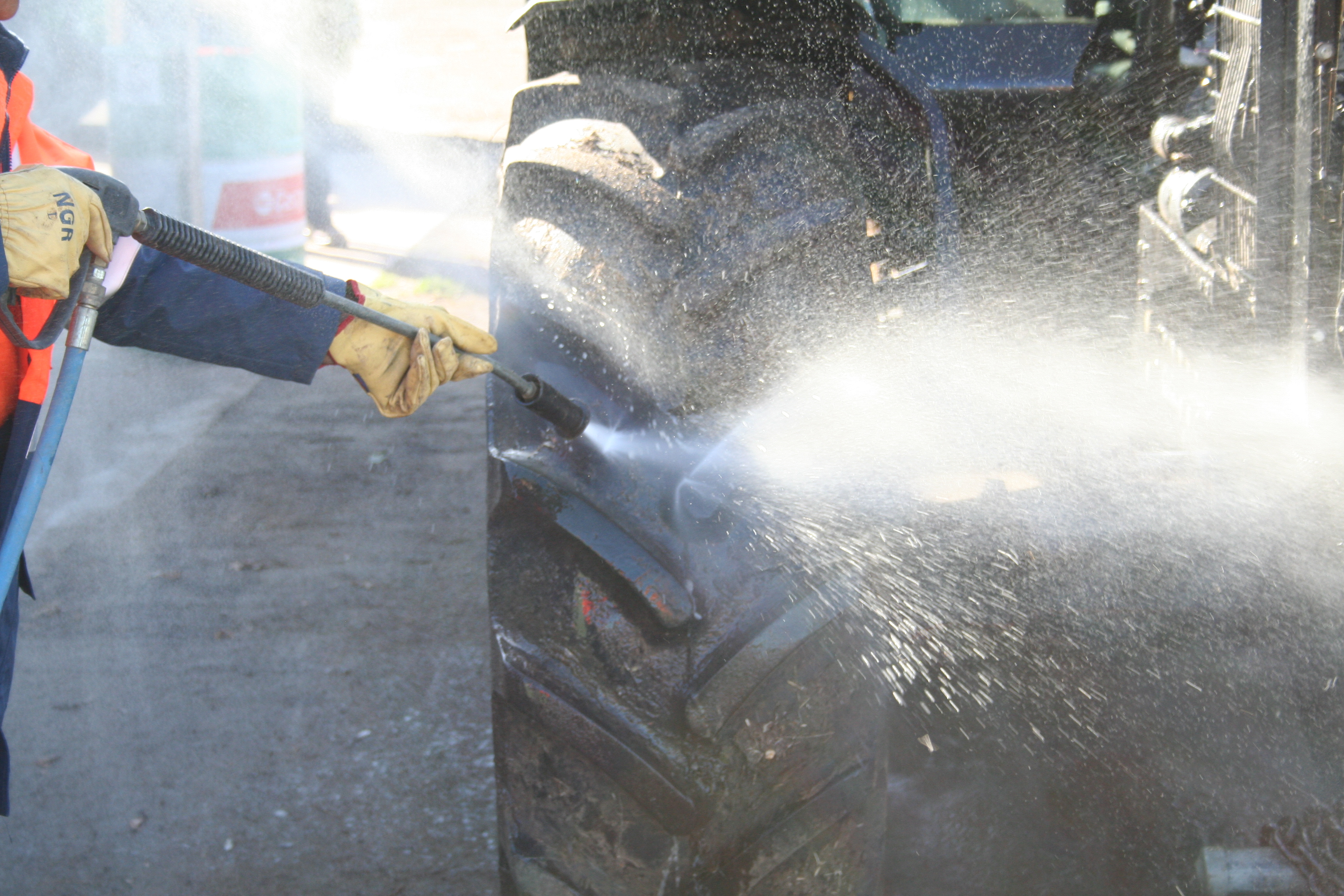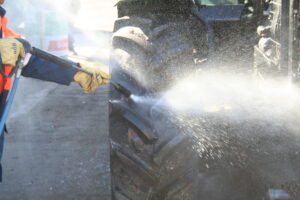
By Jordan Scott, Grains Biosecurity Officer, South Australia
Farm biosecurity relies on consistent, proactive actions. The Grains Farm Biosecurity Program (GFBP), managed by Plant Health Australia (PHA) and funded by growers through Grain Producers Australia (GPA), helps farmers reduce the risk of pest and disease spread on farms. Supported by all mainland grain-producing state governments, the program promotes the ‘come clean, go clean’ approach — a core component of on-farm biosecurity.
People, vehicles, and equipment can carry and transmit contaminants such as fungal spores, insects, and weed seeds. This movement allows pests and diseases to spread between properties, posing a significant threat to the grains industry.
The ‘come clean, go clean’ approach ensures all people, vehicles, and equipment entering or leaving a property are free from contaminants. Regular hygiene practices, equipment decontamination, and vehicle wash-downs are essential for reducing pest and disease spread.
– Establish a wash-down bay near the entrance to your property to clean arriving and departing vehicles.
– Use a hard surface that directs contaminated water to a drainage system away from production areas.
– Use a high-pressure hose or compressed air to remove visible debris.
– Apply an agricultural-grade detergent, leaving it on for at least 10 minutes (or as directed).
– Rinse thoroughly, directing runoff into a separate pit away from production zones.

Provide dedicated gear for each property or production area to prevent cross-contamination. This includes:
– disposable foot coverings for visitors.
– separate boots, overalls, or equipment for staff visiting multiple areas.
Place foot baths at entrances to production areas to enable simple footwear decontamination. Use a suitable disinfectant solution and maintain its concentration.

– Designate parking areas away from production zones.
– Use clear signage to separate ‘clean’ and ‘dirty’ zones.
– Where practical, transfer visitors into farm vehicles.
Maintain accurate records of visitor movements and all farm inputs, such as seed and equipment. These records help trace any biosecurity issues back to their source.
By following the ‘come clean, go clean’ approach and implementing these biosecurity practices, you can help protect your farm from pests and diseases. For more information, educational materials, or advice on developing effective biosecurity procedures, contact your local grains biosecurity officer through the Grains Farm Biosecurity Program.
Launched in 2007, the Grains Farm Biosecurity Program (GFBP) is managed by Plant Health Australia (PHA) and funded by growers through Grain Producers Australia (GPA). The GFBP is an initiative to improve the management of, and preparedness for, biosecurity risks in the grains industry at the farm and industry levels.
For more information and helpful grain resources, visit the GFBP website and the Stored Grain Information Hub.